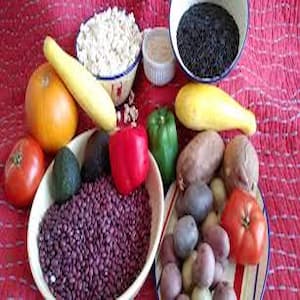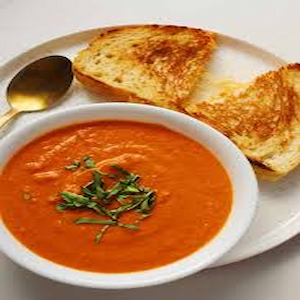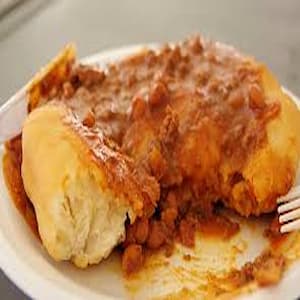The Algonquin people, a prominent Indigenous group in North America, boast a rich cultural heritage deeply intertwined with the natural environment. Their culinary traditions reflect a profound understanding of the land, showcasing a harmonious relationship with the ecosystem. From foraging wild plants to hunting game, the Algonquin people’s diet is a testament to their resourcefulness and respect for nature. In this article, we will explore nine delicious foods native to the Algonquin people, highlighting the significance of these ingredients in their daily lives and cultural practices. As we delve into their culinary practices, we will uncover the historical and contemporary relevance of these traditional foods, emphasizing the importance of preserving this unique gastronomic heritage for future generations.
READ MORE: The Algonquin, Colonial Tales, Culture and Traditions
The Algonquin People and Their Culinary Heritage
Overview of the Algonquin people
Ah, the Algonquin people! Nestled among the verdant landscapes of Canada and the northeastern United States, the Algonquin people have a rich tapestry of culture, history, and, of course, food. This Indigenous group, part of the larger Algonquian linguistic family, boasts a vibrant heritage dating back thousands of years. Renowned for their intricate connection to the land, the Algonquin have cultivated an impressive variety of traditional dishes that celebrate nature’s bounty. From foraging to fishing, they know how to savor the great outdoors—one delicious bite at a time.
The Significance of Food in Algonquin Life
Food is more than just fuel for the Algonquin; it’s a way to connect with family, community, and ancestors. Shared meals are often the centerpiece of gatherings, transforming a simple dinner into a storytelling session filled with laughter and memories. Traditional foods carry cultural significance, passing down valuable lessons about sustainability, the seasons, and the spiritual connection to the land. Whether it’s a feast to honor the harvest or a quiet gathering around a fire, food is a delicious thread that stitches the Algonquin community together.
The Importance of Traditional Foods in Algonquin Culture
Foods Native to the Algonquin: Cultural Identity and Food Connection
For the Algonquin, food isn’t just something you eat; it’s a cornerstone of identity. Traditional recipes often reflect the people’s intricate relationship with the environment, teaching younger generations about local plants, animals, and seasons. Think of it as a cooking class with a spectacular view, where lessons come baked into every loaf of bread or simmered in every stew. These ingredients not only tantalize taste buds but also keep the stories and cultural practices alive, shaping their community and its future.
READ ALSO: 5 Traditional Angami Dishes You Must Try Today
Foods Native to the Algonquin: Seasonal Eating Practices
The Algonquin have mastered the art of eating with the seasons, which feels a bit like being in a real-life Farmville—just with less pixelation and more fresh air. Each season offers unique ingredients, encouraging foraging in spring, hunting in winter, and savoring fruits of the harvest in fall. By aligning their diets with nature’s rhythm, the Algonquin promote ecological harmony, ensuring sustainability while keeping their bellies full and happy. This culinary calendar means there’s always something new to look forward to, making every meal an exciting adventure.
Key Ingredients: Staples of the Algonquin Diet
Foods Native to the Algonquin: Grains and Carbohydrates
When it comes to grains, the Algonquin people have a knack for turning humble ingredients into heartwarming dishes. Wild rice, known as “manoomin,” is a staple that not only fills the belly but also plays a significant role in Algonquin culture. This delicacy grows abundantly in the shallow lakes of their homeland, and harvesting it involves a community effort that transforms an ordinary meal into an extraordinary event. Other grains, such as corn and beans, also find their way onto the table, creating a delicious and nutritious trio that keeps the energy levels high for all adventurers.
Foods Native to the Algonquin: Proteins and Fats
What’s a meal without some protein? For the Algonquin, that often comes from the bounty of the land and water. Fish like trout and salmon are favorites, not just because they’re tasty, but because they carry stories of the rivers and lakes where they thrive. Wild game, including deer and various birds, also contributes to the protein-packed menu. Let’s not forget about the pine nuts and berries that add a touch of fat and sweetness, creating a well-rounded and satisfying meal that nourishes both body and spirit.
Wild Game: Hunting and Its Role in Algonquin Cuisine

Commonly Hunted Animals
If you think food doesn’t come with a thrilling backstory, you’ve never been on an Algonquin hunt. Deer, moose, and various fowl like ducks and geese are some of the most commonly hunted animals, each with its unique flavors and culinary potential. Hunting these animals is not just about filling the larder; it’s a practice steeped in tradition and respect for the creatures that share the land. This connection to hunting fosters a sense of gratitude and reinforces the Algonquin philosophy of living harmoniously with nature.
Foods Native to the Algonquin: Hunting Techniques and Traditions
The Algonquin approach to hunting is with a cocktail of skill, patience, and respect, much like a master chef finally perfecting their soufflé. Traditional techniques include the use of snares, traps, and clever camouflage, ensuring that the hunt is both ethical and productive. These methods have been passed down through generations, each telling stories of ancestors, survival, and the profound respect for wildlife. And let’s be honest—there’s plenty of camaraderie on these hunting trips, where laughter and tall tales are as plentiful as the game itself. So whether it’s a family tradition or a rite of passage, hunting remains an essential piece of Algonquin culinary heritage.
So grab a fork and dig into the flavors that have shaped the Algonquin people for centuries. Each bite is a delicious journey through tradition, culture, and a deep appreciation for the beautiful world around us.
Foraging for Wild Plants: Berries, Nuts, and Greens
Seasonal Foraging Practices
Foraging is akin to culinary treasure hunting, and the Algonquin people mastered this art with the seasons guiding their hands. Come spring, wild ramps and fiddlehead ferns popped up like nature’s own appetizers, ready to be harvested. Summer brought berries—blueberries, blackberries, and cranberries—perfect for nibbling on during fishing trips or baking into pies. Autumn was the time for wild nuts, such as acorns and hazelnuts, while winter made foraging a bit trickier, leading to a focus on roots and hardy greens. Essentially, if it wasn’t growing in the wild, it wasn’t on the plate.
Commonly Foraged Edibles
The Algonquin people had a keen eye for finding nature’s buffet. Berries, nuts, and leafy greens were their mainstays. Blueberries were not just delicious; they were packed with antioxidants and were often dried for winter use. Acorns provided a rich source of fats and proteins—just don’t forget to leach them to remove the bitter tannins! Other sought-after finds included wild leeks, dandelion greens, and even the occasional edible flower, which could add a pop of color and flavor to their meals. Each plant was a gift from Mother Nature, carefully gathered and used with respect.
Traditional Cooking Methods: From Fire to Pot
Cooking Techniques of the Algonquin
Cooking in the Algonquin tradition was all about embracing the fire, the ultimate culinary teammate. They used open flames for roasting meats—imagine the aroma of freshly caught fish sizzling over coals! Steaming was another popular method, often performed in pits covered with leaves. When it came to boiling, they ingeniously heated stones and dropped them into watertight materials like birch bark to create a hot pot! It’s culinary creativity at its finest, proving that necessity really is the mother of invention.
Tools and Utensils Used in Preparation
The Algonquin were resourceful, crafting tools from what nature provided. They fashioned pots from clay and birch bark, and their cutting implements were often made from stone and bone. Wooden spoons, made from carefully carved branches, were their trusty sidekicks in the kitchen. And let’s not forget the fishing nets made from natural fibers, essential for their famous fish dishes. These tools weren’t just for show; they were integral for transforming foraged goodies into delicious meals that kept the community nourished.
Modern Interpretations: How Algonquin Foods Influence Today’s Cuisine
Revival of Indigenous Ingredients in Contemporary Cooking
In recent years, there’s been a culinary renaissance as chefs and home cooks alike seek out indigenous ingredients, including those once cherished by the Algonquin. Berries, wild mushrooms, and game meats have suddenly become the darlings of trendy restaurants. The farm-to-table movement has made room for this beautiful fusion, giving local communities a chance to embrace what’s been here all along! Expect to see dishes featuring wild game, berry reductions, and acorn flour popping up on menus, proving that what’s old is new again.
Fusion Dishes Inspired by Algonquin Cuisine
Fusion cooking has never been more exciting, especially when Algonquin flavors sneak their way into modern dishes. Imagine a blueberry barbecue sauce slathered on grilled bison burgers, or acorn-infused pasta twirled around a rich mushroom sauce. The creativity is boundless, taking traditional ingredients and blending them into unexpected new forms while honoring their origins. This culinary mash-up celebrates diversity and connects us back to the land in fresh and delicious ways.
Preserving Algonquin Food Traditions for Future Generations
The Role of Education and Community Initiatives
Preserving Algonquin food traditions goes beyond nostalgia; it’s about education and empowerment. Community gardens, workshops, and cooking classes are popping up to teach younger generations how to forage, cook, and appreciate their ancestors’ culinary wisdom. By making these traditions accessible, communities are revitalizing their connection to their heritage while encouraging a deeper respect for the environment. After all, nothing says “we love our culture” quite like a potluck featuring wild berry pies.
Encouraging Sustainable Practices in Modern Cooking
Sustainability is the name of the game, and the Algonquin way of living harmoniously with nature serves as a stellar model for modern cooking. By encouraging foraging, using local ingredients, and practicing mindful consumption, we can all play a part in preserving the earth while enjoying delicious meals. Whether through cooking with indigenous ingredients or simply understanding their histories, we can honor the rich culinary past while setting a sustainable course for future feasts. After all, who wouldn’t want to savor the flavors of history?
I hope you enjoyed this delicious journey through the culinary world of the Algonquin people. In conclusion, the culinary traditions of the Algonquin people offer a fascinating glimpse into a way of life that is deeply connected to nature and community. By exploring the delicious foods native to their culture, we not only celebrate their heritage but also recognize the importance of preserving these practices for future generations. As interest in Indigenous foods continues to grow, we are reminded of the valuable lessons they offer about sustainability, respect for the land, and the joy of sharing meals with loved ones. Embracing and honoring these traditional foods can enrich our understanding of the Algonquin people and the broader significance of Indigenous culinary practices.
Frequently Asked Questions
What are some commonly eaten foods in Algonquin cuisine?
Algonquin cuisine includes a variety of foods such as wild game (deer, moose, and birds), fish, berries (like blueberries and cranberries), nuts (such as acorns), and various wild greens and roots. These foods play a critical role in their traditional diet, reflecting their connection to the land.
How do traditional Algonquin cooking methods differ from modern techniques?
Traditional Algonquin cooking methods often involve open-fire cooking, smoking, and using earth ovens, which emphasize the use of natural heat sources. In contrast, modern cooking techniques typically utilize gas or electric appliances, which can alter the flavors and textures of the food.
Why is it important to preserve Algonquin food traditions?
Preserving Algonquin food traditions is vital for maintaining cultural identity and heritage. These practices not only provide sustenance but also embody the values, history, and environmental knowledge of the Algonquin people. Additionally, they offer insights into sustainable living and healthy eating practices that can benefit broader communities.
Can non-Indigenous people incorporate Algonquin foods into their diets?
Yes, non-Indigenous people can incorporate Algonquin foods into their diets by sourcing native ingredients and experimenting with traditional recipes. This practice fosters greater appreciation and respect for Indigenous cultures while promoting biodiversity and sustainability in food choices.



